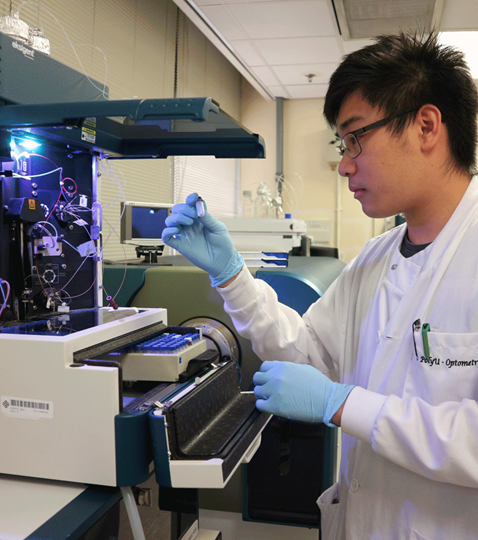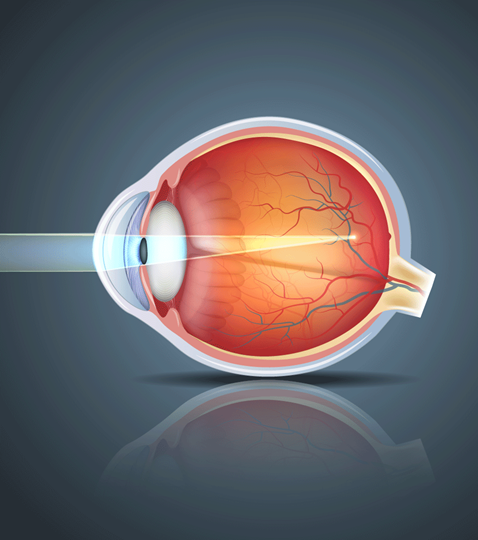Myopia Epidemic in Hong Kong and South East Asia
Shortsightedness or myopia has assumed epidemic proportions in South East Asia over the past few decades. It is the most prevalent refractive error in Hong Kong. The average prevalence of myopia in Hong Kong people born before 1950 is about 30 % whereas it is about 70% people born between 1950 and 1980. Hong Kong Chinese students have a higher prevalence of myopia regardless of whether they attend in local or international schools when compared with other ethnic groups.
The severity of myopia is also escalating and it is common to find young adults with over 5D of myopia in Hong Kong. Similar figures have been reported in other Asian regions including Singapore, Taiwan and Southern China. Alarmingly, more than 80% of the entire adult population will be myopic within the next 30 years. In addition to the cost of myopic refractive correction, there are myopia-related ocular complications which have raised significant health concerns. High myopia is frequently associated with retinal degeneration, peripheral retinal breaks and glaucoma. These conditions may lead to permanent visual loss and blindness.
There is no clinically accepted method in controlling myopic growth at present. The goal of our myopia research is to find ways to retard and, one day, can cure myopia.


Myopia Research in PolyU

Orthokeratology (Ortho-k) in Hong Kong
Overnight ortho-k is a treatment for correcting myopia by altering the corneal shape with specially designed, high oxygen permeability rigid gas permeable contact lenses. Patients wear the lenses when they go to sleep and remove them in the morning. When the treatment is completed and stabilized, they will be able to see clearly without the use of any other optical aids in the daytime. The effect is temporary and requires lens wear usually on a nightly basis. In Hong Kong, the majority of ortho-k patients are children wearing their lenses to slow the progression of myopia.
In 2000, our research team conducted a pilot study on ortho-k for myopic control - the LORIC study. The results of the LORIC have attracted extensive attention worldwide as it is the first study reporting the potential use of ortho-k in slowing the progression of myopia in children. Our objective is to promote a safe and effective alternative to the general public, especially to children, for correcting refractive errors and slowing the increase in myopia. The ultimate goal is to prevent the development of high myopia in the population thereby reducing vision loss in our community.
Our current research studies address the factors governing the success of ortho-k and the corneal responses to these specially designed contact lenses. We also want to identify the characteristics of good candidates for ortho-k and to follow the long-term refractive and ocular changes of these patients.

Proteomic Analysis of Myopia Development in the Animal Model

Myopia Genomics Study
The myopia genomics study aims to identify human genes that may predispose people to myopia. In turn, this helps to delineate the molecular mechanisms underlying myopia development, and devise new strategies to delay the onset or even prevent the development of myopia in susceptible individuals.
Our research team employs a variety of strategies to identify myopia genes. In terms of study subjects, we recruit families with severely myopic children, and unrelated individuals who are either severely myopic or without myopia. In terms of the study approach, we study individual candidate genes selected based on putative biological functions and related information, and also systematically screen the whole human genome with high-throughput genotyping technologies. We have already identified a number of myopia genes and will continue our efforts to identify more myopia genes and delineate the molecular mechanisms underlying myopia.

Pathophysiology of Myopia Development

Astigmatism
In addition to myopia, astigmatism is also a very common refractive error that affects visual quality at all ages. Although it is frequently associated with short- and long-sightednesses, ageing eyes, and eye diseases, the cause of astigmatism is not fully understood. The main research interest is to study the mechanism underlying astigmatism in response to the changes in the visual environment. It is hoped that these studies will shed light on the clinical management of astigmatic errors.




